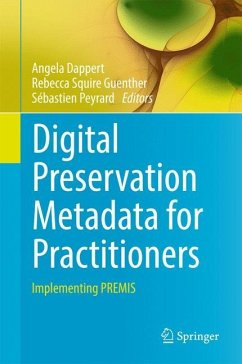This book begins with an introduction to fundamental issues related to digital preservation metadata before proceeding to in-depth coverage of issues concerning its practical use and implementation. It helps readers to understand which options need to be considered in specifying a digital preservation metadata profile to ensure it matches their individual content types, technical infrastructure, and organizational needs. Further, it provides practical guidance and examples, and raises important questions. It does not provide full-fledged implementation solutions, as such solutions can, by definition, only be specific to a given preservation context. As such, the book effectively bridges the gap between the formal specifications provided in a standard, such as the PREMIS Data Dictionary - a de-facto standard that defines the core metadata required by most preservation repositories - and specific implementations.
Anybody who needs to manage digital assets in any form with the intent of preserving them for an indefinite period of time will find this book a valuable resource. The PREMIS Data Dictionary provides a data model consisting of basic entities (objects, agents, events and rights) and basic properties (called "semantic units") that describe them. The key challenge addressed is that of determining which information one needs to keep, together with one's digital assets, so that they can be understood and used in the long-term - in other words, exactly which metadata one needs.
The book will greatly benefit beginners and current practitioners alike. It is equally targeted at digital preservation repository managers and metadata analysts who are responsible for digital preservation metadata, as it is at students in Library, Information and Archival Science degree programs or related fields. Further, it can be used at the conception stage of a digital preservation system or for self-auditing an existing system.
Anybody who needs to manage digital assets in any form with the intent of preserving them for an indefinite period of time will find this book a valuable resource. The PREMIS Data Dictionary provides a data model consisting of basic entities (objects, agents, events and rights) and basic properties (called "semantic units") that describe them. The key challenge addressed is that of determining which information one needs to keep, together with one's digital assets, so that they can be understood and used in the long-term - in other words, exactly which metadata one needs.
The book will greatly benefit beginners and current practitioners alike. It is equally targeted at digital preservation repository managers and metadata analysts who are responsible for digital preservation metadata, as it is at students in Library, Information and Archival Science degree programs or related fields. Further, it can be used at the conception stage of a digital preservation system or for self-auditing an existing system.








